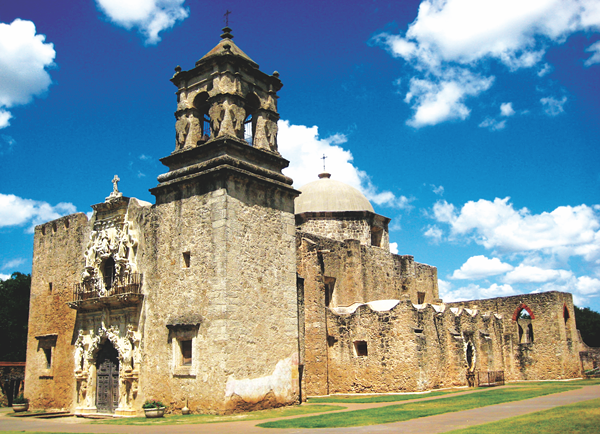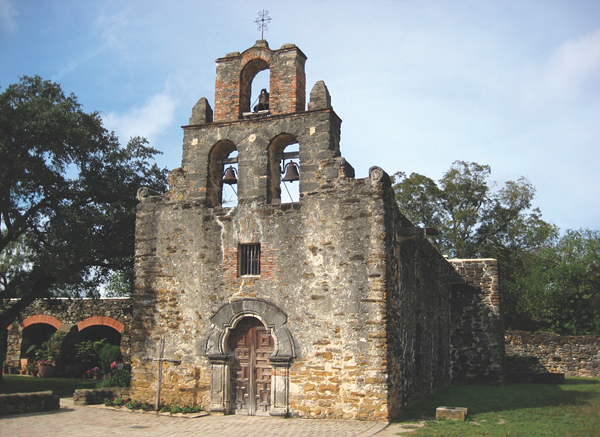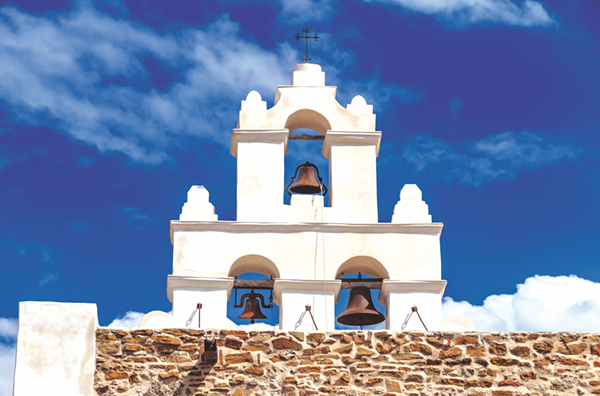The most prominent and important of San Antonio’s many architectural, cultural, and historical treasures are surely the San Antonio Missions.
The series of five Spanish missions — San Antonio de Valero, Concepción, San Jose, San Juan, and Espada — arrayed along the banks of the San Antonio River in central and southern San Antonio, were made into a National Historical Park in 1983 (excepting The Alamo, which belongs to the State of Texas) and a UNESCO World Heritage Site in 2015.
In many ways you could say that the missions have been important cultural hubs ever since they were established, beginning with The Alamo (Mission San Antonio de Valero), which was founded in 1718.
Like all colonial missions, the missions of San Antonio served a variety of functions, all rooted in the Spanish colonizer’s desires to maintain order and secure devotion from the natives and colonists alike. Of course, the propagation of the Catholic faith, especially among the newly initiated indigenous population, helped in this quest for control. At the same time, the missions, in a broader and more optimistic view, served as important gathering places for trade and cultural exchange. Each of the missions, which functioned as ad hoc centers of integration into Spanish civic life, was its own self-sustaining community, housing indigenous neophytes to the European model of civilization and Spanish settlers alike.
By the mid-1700s, all five missions were thriving centers of culture, faith, and commerce, each with its own unique character.
The feat of integration thus performed at these sites, which we will for our current purposes approach with a naive disregard for its darker aspects, was remarkable. That any cohesion existed at all is especially impressive when you consider that the indigenous tenants of and visitors to these missions were not of a homogenous group, but among themselves represented a host of distinct cultures, histories and languages.
Then, with Spain’s stronghold on the region diminishing along with its will to fight for it, the missions were all secularized by the beginning of the 1800s.
Over the long years since the Spanish withdrew, Texas obviously changed dramatically. Wars were fought, varying allegiances were pledged, and the missions, long beacons of San Antonio’s status as a world-class melting pot, were ravaged by time and misuse. The city and state, at least from time to time, did their best to preserve the missions.
After 1983’s National Historical Park designation, the missions began enjoying an increasing flow of visitors. As San Antonio became an increasingly popular tourist destination, the missions, of which only The Alamo had previously been considered a main attraction, became popular for history buffs and those with a casual if romantic interest in the old West or the legacy of the church in the colonial Americas.
The completion of the Mission Reach Ecosystem Restoration and Recreation project in 2013 connected the missions to each other and to the San Antonio River Walk in a whole new way, creating a huge series of trails and designated natural areas for visitors to explore.
Then, of course, 2015’s UNESCO World Heritage Site designation, which has already spurred furious development and furious debates around said development, set the stage for the future of our missions — the future of our shared past, if you will — and will likely ensure that the San Antonio Missions continue to be a vibrant part of both our culture and our economy going forward.
The legacy of the missions, after all, is not one-sided, with one group dictating to another just how things ought to be. These once were, and can be still, places where indigenous culture, if it was sometimes stamped out, had an impact on Western culture. The missions, as UNESCO has recognized in proffering its game-changing World Heritage Site status, can be seen as places where cultural cross-pollination bears the kind of fruit that’s sweet enough to make us all remember that we still have a great deal to learn from one another.





